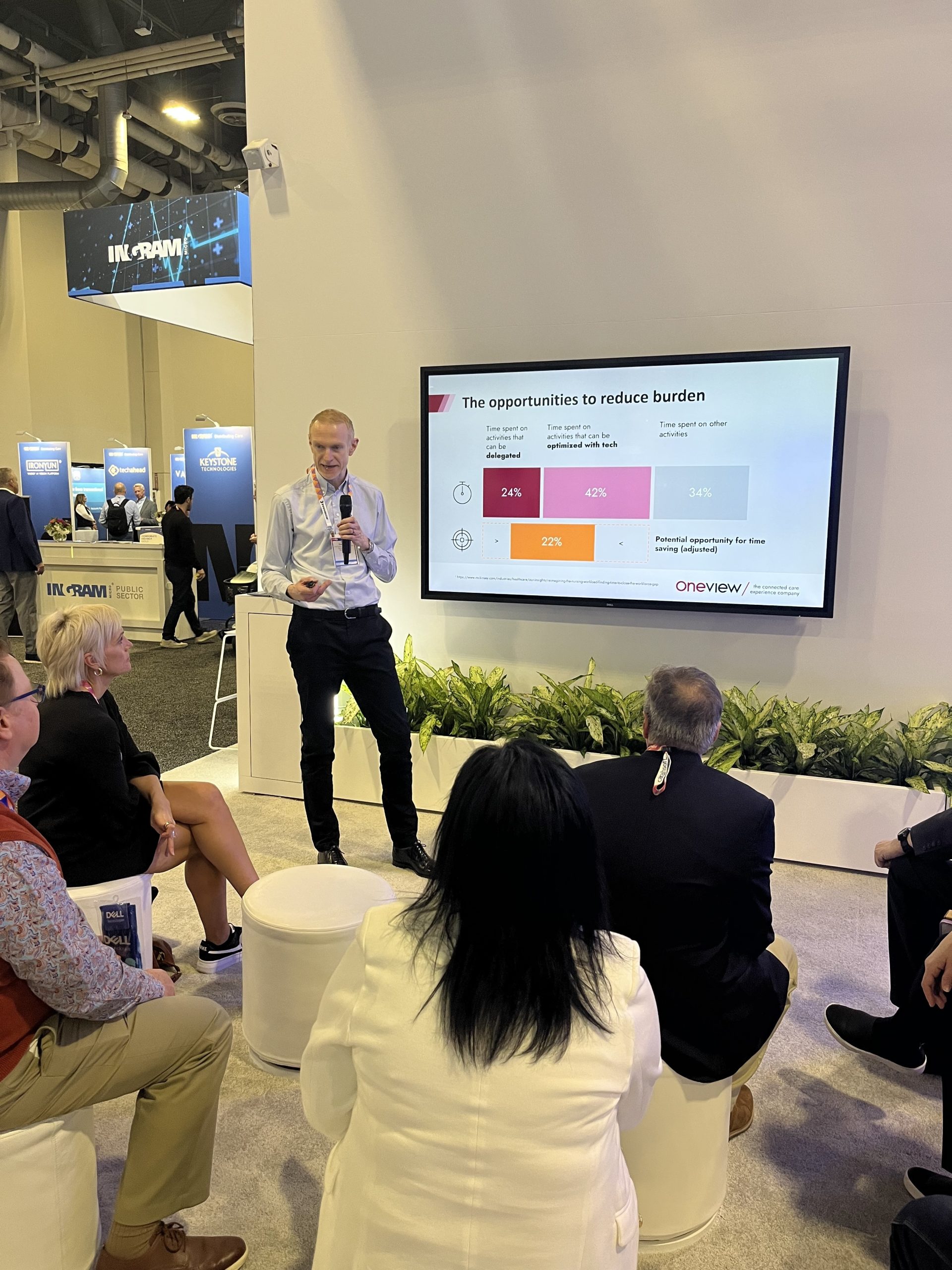We call our product offering a “Care Experience Platform” – or CXP for short. Not a “Patient Experience System” or “Interactive Patient Care System”.
What is a Care Experience Platform?
We’ve learned from our partnerships with leading healthcare organizations. Family and clinician experiences are key to the best patient experiences.
Dr Paul Testa, CMIO at NYU Langone Health, said it best in a recent webinar on implementing Oneview:
“We very quickly realized that it’s hard to impact the experience of a patient and not equally address the clinician digital experience.”
And so we define the “Care Experience” as the experience of the patient, of their family and of the team who care for them. Our vision as a company is “to power personalized, exemplary care experiences”.
With healthcare costs already unsustainable, a new approach is key. Technology is the only hope for a sustainable healthcare model. But technology often means more automation and less human interaction.
Our belief? That the compassionate use of technology can lead us back to what matters. Thoughtful use of innovative technologies, designed around people and relationships, can help.
This is what we’re focussed on with our Care Experience Platform, the “Next Generation” of Interactive Patient Care.
What are the 7 characteristics of a Care Experience Platform?
1. Considers all stakeholders
A Care Experience Platform has the goal of improving the experience for patients, families and the whole care team. Solutions that focus only the patient will ultimately fail, because neglecting the family and care team experiences can negatively impact the patient experience.
By considering all stakeholders and supporting relationship-centred care, a Care Experience Platform optimises the experience for all, and provides an important foundation for population health management and sustainable, scalable personalized care.
2. Empowers patients and families
A Care Experience Platform must empower patients and families to be active participants in care. This means providing access to information, education and tools which support communication about, understanding of, and participation in, care. It must recognize that people have different needs, everything from language to culture to learning style, and must enable personalized interventions that are sustainable at scale.
3. Interoperates across the ecosystem
A Care Experience Platform interoperates across best-of-breed systems. Healthcare is a complex ecosystem, and no single vendor will solve all problems. Healthcare organizations have invested to implement Systems of Record, Electronic Health Records. With integration technologies like FHIR and RESTful APIs as well as HL7, a unified System of Engagement platform can leverage this investment, unifying information, simplifying workflows and enabling automation while delivering a seamless experience.
4. Supports a single view of the person
While Electronic Health Records have enabled a single clinical record for the patient (at least within a healthcare organization), engagement is often siloed across many systems including patient outreach, patient messaging, contact centres, websites, patient portals, apps and other solutions.
This fragmentation can make it difficult to understand and respect a person’s preferences and their Social Determinants of Health. Unifying experience, operational, clinical and social determinants of health data to provide a full view of a patient and a person, their healthcare journey and how they feel at each stage can enable better, more personalized care experiences – and ultimately, better care.
5. Is omni-channel and scalable across the care-continuum
A Care Experience Platform must be scalable across the care-continuum. The patient journey crosses many care settings and providers, and truly relationship-centred care cannot depend on just one digital channel. Omni-channel engagement is key, with the ability to support patients and families across digital channels at the right time, in the right place, on the right channel, with the right information, in a seamless manner – all personalized based on the single view of the person.
This personalisation and ability to reach patients in the way that is most effective for them is key to advancing and ensuring health equity.
6. Leverages cloud for agility and scalability
The COVID-19 pandemic has challenged the healthcare industry to respond and transform at an unprecedented scale and speed. The migration to value-based care is demanding care model innovation and advancements in patient engagement and workflow efficiencies to drive quality and cost improvements. A Care Experience Platform must leverage the cloud to enable the business agility, “speed to value” and scalability that is key to sustainable healthcare.
7. Protects patients’ information and privacy
Lastly, but most importantly, a Care Experience Platform must be secure and compliant. It must ensure the security and privacy of patient data at rest, in use and in motion. This goes beyond the specific software service, to the vendor organization, and all the way up the technology stack to the cloud platform. With healthcare technology security breaches becoming increasingly audacious and damaging, healthcare organizations cannot be complacent, and must seek evidence of compliance such as ISO 27001, ISO 27701 or HITRUST.
Want to learn more about CXP?
Over the coming weeks and months, in a series of blog posts, members of the Oneview team will explore how our CXP meets these characteristics today, and how we’re planning for the future. Check back for updates and join the conversation on our social media channels.
To learn more about our CXP and how it could help your health system, visit the CXP Platform section of our website.
Want to try it for yourself? We can send you an evaluation tablet, so you’ll see what your patients would experience.



